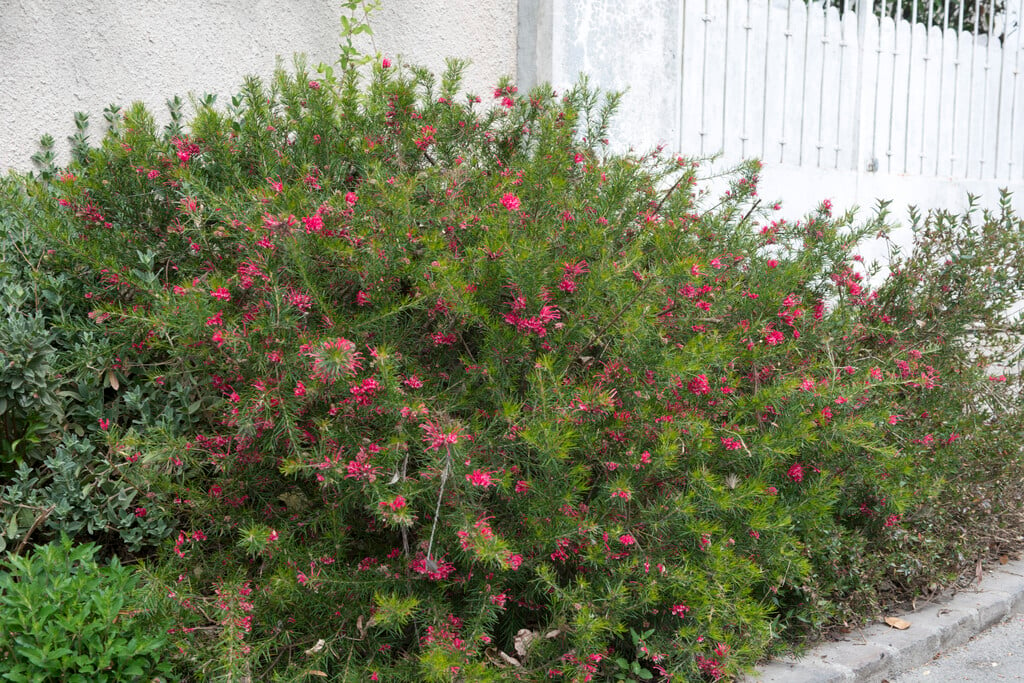Grevillea juniperina
juniper-leaf grevillea
A dense, rounded, evergreen shrub to 2m tall, with prostrate to upright branches densely clothed with narrowly linear, pointed leaves to 2cm long. From late spring to midsummer it produces clusters of greenish-yellow to red flowers
Size
Ultimate height
1.5–2.5 metresTime to ultimate height
10–20 yearsUltimate spread
1.5–2.5 metresGrowing conditions
Moisture
Well–drainedpH
Acid, NeutralColour & scent
| Stem | Flower | Foliage | Fruit | |
| Spring | Green Yellow Red | Green | ||
|---|---|---|---|---|
| Summer | Green Yellow Red | Green | ||
| Autumn | Green | |||
| Winter | Green |
Position
- Full sun
Aspect
South–facing or West–facing
Exposure
ShelteredDrought resistance
Yes Hardiness
H4Botanical details
- Family
- Proteaceae
- Native to GB / Ireland
- No
- Foliage
- Evergreen
- Habit
- Bushy
- Potentially harmful
- Skin irritant/allergen. Wear gloves and other protective equipment when handling Pets: Skin irritant/allergen. For further information and contact numbers regarding pets, see the HTA guide to potentially harmful plants
- Genus
Grevillea can be evergreen shrubs or trees, with alternate, simple or pinnately divided leaves and petal-less flowers consisting of a colourful calyx tube with protruding style, borne in racemes or panicles
- Name status
Correct
- Plant range
- Australia (New South Wales)
How to grow
Cultivation
Outdoors, grow in freely-draining, moderately fertile, acid to neutral soil in full sun. Under glass, grow in ericaceous potting compost with added extra grit, in full light. When in growth water freely and apply a low-phosphate liquid fertiliser monthly; water sparingly at other times. Top dress or pot on in spring
Propagation
Propagate by sowing scarified or pre-soaked seed in spring, or by semi-ripe cuttings in summer
Suggested planting locations and garden types
- City and courtyard gardens
- Coastal
- Mediterranean climate plants
- Low Maintenance
- Flower borders and beds
Pruning
See pruning group 1
Pests
Generally pest-free
Diseases
May be susceptible to honey fungus (rarely)
Get involved
The Royal Horticultural Society is the UK’s leading gardening charity. We aim to enrich everyone’s life through plants, and make the UK a greener and more beautiful place.
